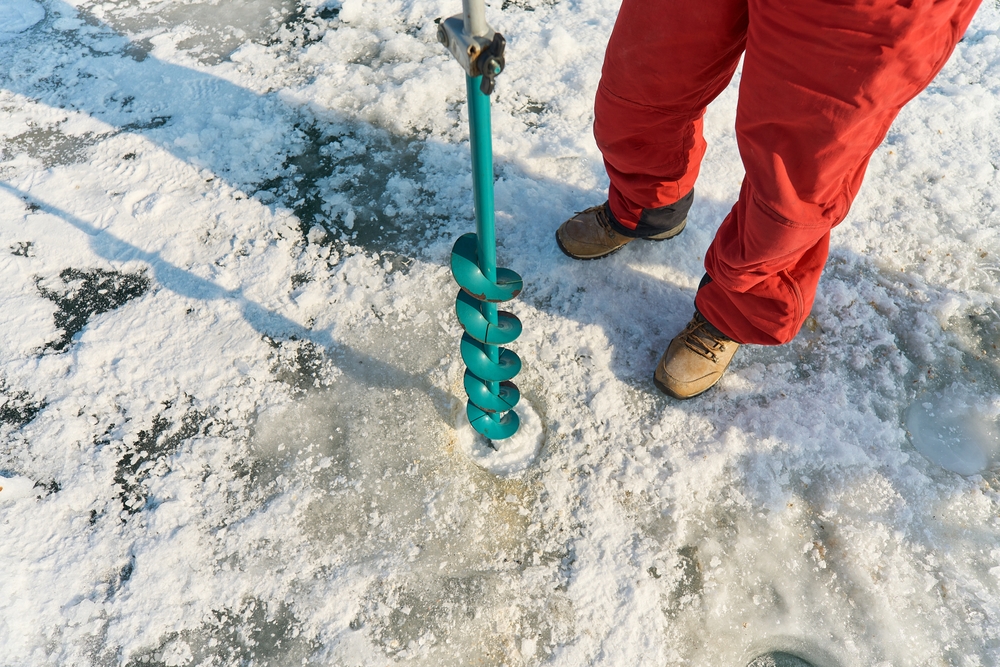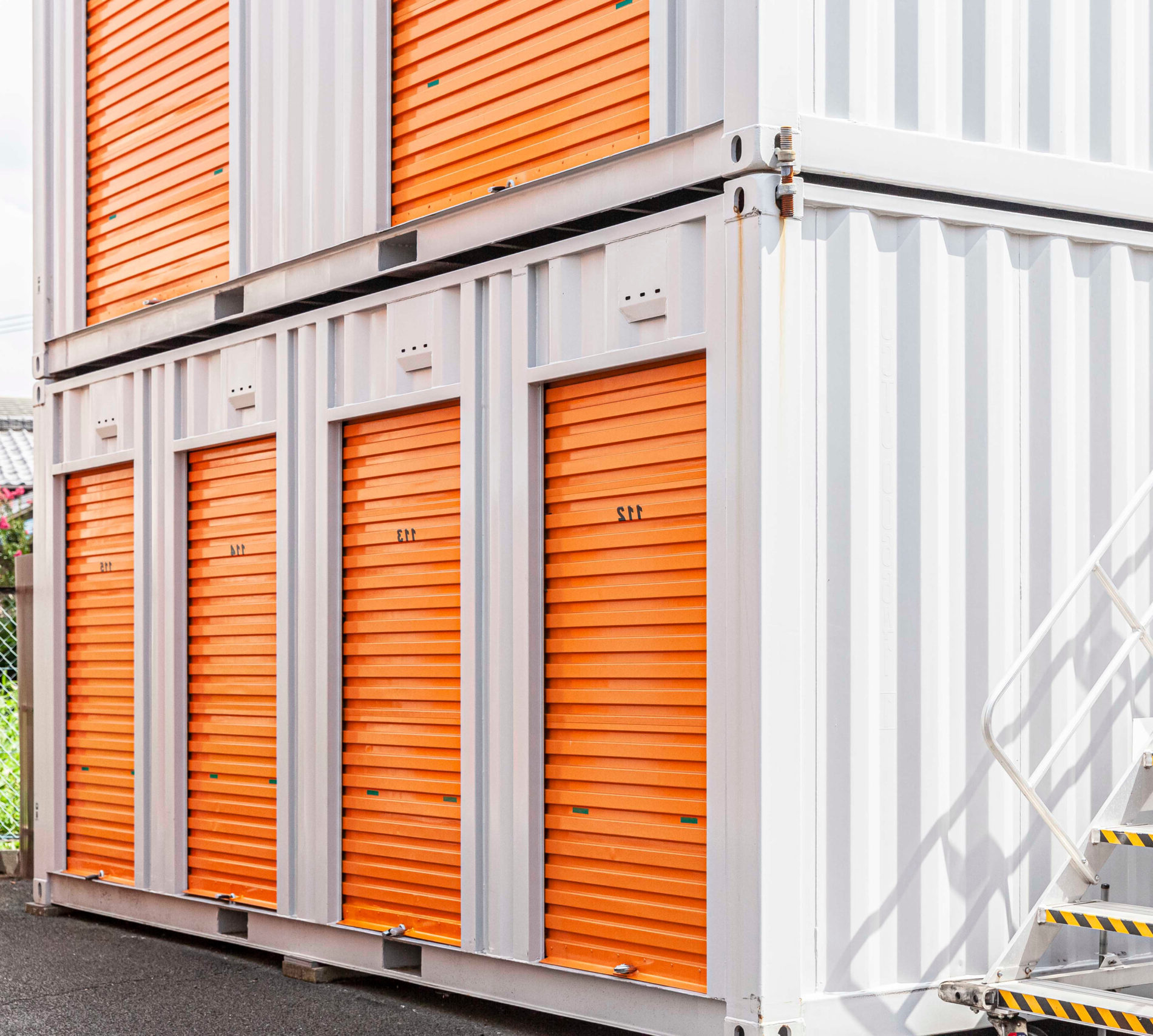Picture this: it’s been roughly six months of fishing multiple times a week in warm temperatures when the cold hits. Suddenly, it’s time to put away your summertime fishing gear and take out the ice augers, ice fishing tackle boxes, and tents needed for ice fishing.
But don’t take your rod socks off just yet – ideal ice fishing conditions aren’t as consistent as they are for regular fishing.
Not every day will be cold enough to freeze the pond or lake of your favorite winter fishing spot to the point of holding your weight. In fact, you could go several days or weeks before you need to use your ice auger to carve out a fishing hole again.
Whether it’s unfavorable ice fishing conditions or the return of spring, you’ll need somewhere to store your ice fishing equipment, and the garage or attic isn’t always the best place.
Our expert guide on how to store ice fishing rods and all your other ice fishing gear will cover everything you need to know, starting with proper cleaning. We’ll help you cultivate a fishing rod storage system that gives you easy access to all your most dependable fishing tools.
Finally, we’ll also discuss how to convert a section of your self-storage unit into your official ice fishing rod storage space.
By renting a small storage unit for your ice fishing gear, you can store all of your equipment in one place. And our handy search tool can help find a unit right by your favorite ice fishing location.
How to Store Ice Fishing Rods
Maybe you’re putting your ice fishing equipment up because winter’s over. Or maybe it’s just begun, and you’ve taken your gear out of storage and used it only to have the weather warm up on you for a week or two.
Our first step will be folding up your ice fishing chair and prepping the gear for storage after a hard day of ice fishing. Luckily for you, we’ve prepared a cheat sheet.
But before we crack into the ice fishing equipment storage checklist, let’s start with the basics.
Should You Clean Ice Fishing Gear Before Storage Even if it’s Short-Term?
There’s a reason why we started the checklist the way we did: cleaning your ice fishing gear before you store it – is vital to your equipment’s life span.
We know it’s tempting to toss your dirty rods into a 5-gallon bucket until your favorite lake is frozen again, but you risk returning to corroded, warped, and damaged gear. No need to take our word for it—here’s what the experts have to say:
“Before putting your equipment away, try to imagine the condition you started with and leave it in the same way,” says Joel Nelson, pro-staffer for sporting equipment retailers Otter Outdoors, Rapala, and Ice Force. Nelson says this means cleaning the equipment to remove any blemishes or debris.
Ice fishing gear is used outdoors in the cold, moist weather—let it sit, and it’s only a matter of time before the debris it’s caked in causes lasting damage.
“After it’s been used, ice fishing gear tends to have snow and ice and other buildup on its surface,” Nelson says. “As the temperature warms up, the buildup melts and creates a moist environment for mold and mildew. To avoid this, I recommend using any kind of towel to wipe down your equipment. Leave it in the sunlight to dry it off and air it out [before putting it away.]”
Remember to clean your gutting equipment and any boots or clothing you’re storing as well.
“Anything that has mud on it or was used to transport fish should be cleaned so as to not hold an odor or rust metal parts,” says John Kushniroff, manager of Prime Self Storage in Henderson, Colo.
Ice Fishing Rod Storage Checklist
Prep Ice Fishing Rods for Storage
-Dry all your rods, reel handles, and reel seats before you put them away to stop corrosion from setting in.
-Loosen your reel’s drag settings to maintain the spring tension.
-Remove the fishing line from your reels to prevent memory formation, bending, and line degrading.
Store Your Ice Fishing Rods Horizontally in a Climate-Controlled Space
-Store your rods horizontally on dedicated racks equipped with pole holders or DIY PVC holders.
-Use ice fishing rod sleeves, tubes, or a heavy-duty ice fishing rod case to prevent damage, corrosion, and wear and tear.
-Keep rods in a climate-controlled environment — both extreme cold and extreme heat jeopardize your rod’s conditions.
Prep Your Reels For Storage
-Apply a light coat of reel oil to all moving parts before storing your reels.
-If it’s still the winter season and you’re storing your ice fishing rods for a brief period, you can leave your reels attached.
-If you’re storing your ice fishing gear long-term because the winter season is over, you might want to detach the reels from rods and store them separately.
Avoid These Common Ice Fishing Rod Storage Mistakes
-Never store rods leaning against walls without proper support – leaning against the side of a five-gallon bucket doesn’t count.
-Avoid storing rods in direct sunlight, or anywhere they’re exposed to extreme temperatures in either direction.
-Don’t stack rods on top of each other – most ice fishing rod cases designed for multiple rods use spacers.
Conduct Routine Maintenance On the Ice Fishing Rods in Long-Term Storage
-Inspect your rods and reels monthly for the earliest signs of corrosion, warping, or any other types of damage.
-Whether you’re keeping your ice fishing rods in rod holders or ice fishing rod cases, rotate your rods every three months or so.
-Oil your reels and give them a test every 2-3 months to ensure proper operation.
Ice Fishing Tackle Storage and Organization Tips

When it comes to storing your ice fishing lures, we suggest you start by organizing them by type.
Wrap your ice fishing lures in lure wrap to guard them against corrosion and to keep them from incurring damage by contacting each other or other tackle gear.
Store your ice fishing lures in waterproof, durable plastic lure boxes with silica packets to help keep moisture out. Again, we suggest you inspect your lures every few months if you’re storing them long-term or during the off-season.
Ice Auger Storage Tips
An ice auger is undoubtedly one of the most important tools used in ice fishing. The auger is the tool ice fishers use to drill holes through the thick ice. Some ice augers are non-mechanical and operated by hand, but the majority of augers used these days are gas-powered.
Although the mechanical augers do require special maintenance, blade care, and maintenance is just as important on both types of ice augers.
Gas-Powered Ice Fishing Auger Preparation
“The worst thing that kills them is non-use,” Nelson says. Leaving your auger sitting without running its motor could have an adverse effect on its internal mechanisms.
To prolong their lifespans and conditions, Nelson recommends either charging the auger batteries every 1-3 months and running the motor after 1-2 months of inactivity.
“I recommend adding gasoline with stabilizer in the fuel tank and running the motor to stabilize it into the carburetor,” he says. “You want to keep the carburetor parts wet. Afterward, you’ll want to drain the gas tank to keep the parts from breaking down due to being soaked with gasoline.”
Ice Fishing Auger Blade Care and Maintenance
When it comes to ice auger blade care and maintenance, Nelson has some universal advice for us.
“Make sure there are no dings or rollovers,” Nelson says. “If they need replacing, [before you go ice fishing] is a good time to do it. It wouldn’t be a safety hazard, but over the course of the year, the blades get done in by rocks and sediment. Sometimes, there’s sand in the ice when you drill through it, and this can cause damage over time.”
Additional Tips For Storing Ice Fishing Equipment
Storing Ice Fishing Shelters
Be sure to wipe down and dry off your ice fishing shelters to prevent mold growth. Mold and mildew can lead to fabric deterioration and gnarly smells you might not be able to get out.
If mold spores develop inside the storage space, they’ll spread on all available surfaces, which can damage the rest of your ice fishing equipment as well.
We’ll discuss this in more detail below, but self-storage allows you to access your ice fishing shelter in storage regularly. We suggest checking for mold and mildew growth and stopping it at the first signs you see before it spreads.
Electronics and Sonar Storage
Some of the pro ice fishers out there use electronic fishing tools like sonar. When it comes to storing electronic gear, we suggest removing batteries from all electronics.
If you kept the original packaging, it’s a good idea to store your sonar units in the box they came in with the original foam padding, if possible.
It’s extremely important to store electronic devices in a climate-controlled environment that is away from extreme hot or cold temperatures.
Where to Store Ice Fishing Rods: Ideal Locations For Storing Ice Fishing Gear
For starters, you’ll want to store your ice fishing equipment somewhere that’s easy to get to. A self-storage unit allows regular access to your ice fishing gear so you can perform all the necessary maintenance we outlined above.
Beyond cleaning and maintenance, there are other things you should keep in mind when storing ice fishing gear. For one, Nelson says rodents are a serious threat to tent fabric. If your shelter becomes riddled with gaps, it will no longer be able to protect you from the wind and snow while you’re out fishing.
“Some people recommend dryer sheets,” says Nelson. “[Rodents] don’t like the smell.” If you use dryer sheets in your storage unit to ward off pests, be sure to replace them every few weeks.
“I would hang any material like bags, nets, or waders so they stay in the best condition for the following season.” -John Kushniroff, manager of Prime Self Storage.
Here are some more pro tips on choosing the ideal storage space for your ice fishing rods and equipment:
Climate-Controlled Environment: If you’re storing your ice fishing gear at home in the attic, basement, or garage, you risk mold and mildew growth during the wet and humid months. Use a dehumidifier, and make sure your space has adequate air circulation to prevent stagnant air and mold growth. Store your ice fishing equipment far away from heat sources like furnaces or water heaters.
Space Organization: Nelson also recommends storing ice fishing equipment off the ground. If you trip over your fishing gear while it’s in storage, you risk expensive damage to the equipment and personal injury to yourself. “Use something three feet tall or so, like a folding table,” says Nelson. “This keeps it off the ground and out of your way.”
Quick Access During Ice Fishing Season: Create an ice fishing rod storage system that allows easy storage access, not just for the frequently used fishing gear but also the stuff you’ll need to do maintenance on throughout the reasons.ice fishing rod cases, plastic rod holders, and plastic lure boxes, clearly and keep them organized on the same shelving system. Make yourself a map or diagram if it helps you keep track.
How Storage.com Can Help You Store Ice Fishing Rods and Other Ice Fishing Equipment
By now, you should have a pretty solid idea of how to store your ice fishing equipment, whether it’s in between fishing trips or long-term during the off-season.
The primary takeaways are to clean and prep your ice fishing gear before you store it and to store it somewhere climate-controlled where you can access and maintain the fishing equipment throughout the year. You also need a pest-free storage space with plenty of space so your rods aren’t piled on top of each other and your tents are getting chewed through by rats.
But even the most organized garage or basement has its spatial limits. To store your ice fishing equipment like a pro, we suggest renting a storage unit between your house and your favorite fishing location.
Imagine having a refuge you can escape to for some fishing gear maintenance. And think of the perks of having your own fishing equipment sanctuary to unload and clean your wet gear before you head home.
Storage.com makes finding storage easy. Our search tool lets you apply filters based on unit sizes and storage features like climate control, 24-hour access, on-site alarms and security, and even cold-weather luxuries like drive-up storage units.
Simply enter your zip code, and we’ll compare all the options in your area that meet your storage needs. You’ve got our ice fishing equipment storage checklist ready. Now, learn how to store your ice fishing rods and maintain your gear like a pro by reserving a storage unit in your area straight from our site today!






